The year 2023 was by far the warmest year on record. And yet it will be one of the coolest years of the rest of our lives if we don’t transition more quickly away from fossil fuels. I show here a few charts from recently released “state of the climate” reports from CarbonBrief and Berkeley Earth. What is happening to our planet as we continue to burn such large amounts of fossil fuels?
Earth’s surface temperature in 2023 far exceeded that of all previous years on record. Scientists are unclear as to why the temperatures exceeded predictions, and are not sure what it means for the coming years.
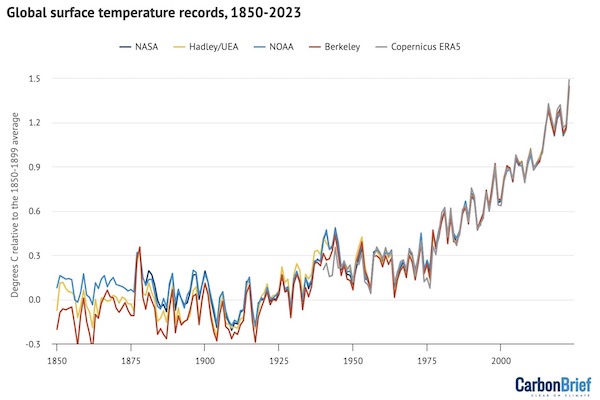
This chart shows temperatures relative to an average pre-industrial baseline. It shows five different data sets, which align very closely in recent years. Source: CarbonBrief
Both land and ocean temperatures set records, with land temperatures almost 4°F warmer than pre-industrial temperatures.

Source: Berkeley Earth
Every month of the year from June onward was the warmest on record for that month, by a wide margin.
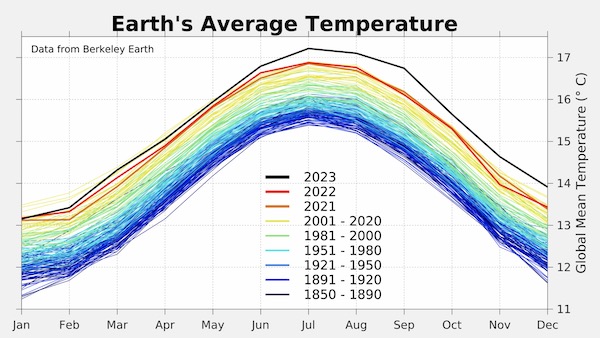
Source: Berkeley Earth
The heat affected almost every part of the world, with the western US being a rare exception. 29% of the world’s population had their warmest year ever in 2023.
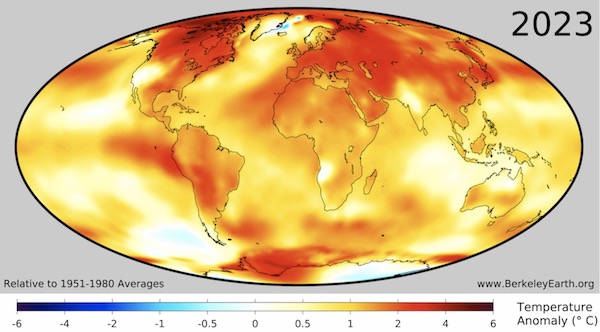
Source: Berkeley Earth
The ocean absorbs 93% of the excess heat that is trapped in our atmosphere. It is rapidly heating up. According to CarbonBrief, “The heat increase in 2023 alone compared to 2021 – about 15 zettajoules – is around 25 times as much as the total energy produced by all human activities on Earth in 2021.” The warming extends to 20,000 feet below the surface.
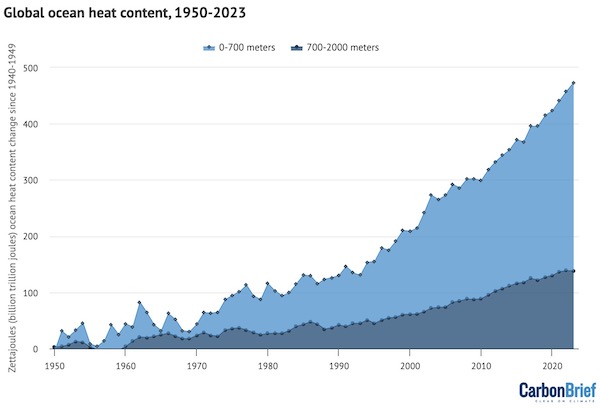
Source: CarbonBrief
You can see in the chart above that ocean warming accelerated after 1991. Accurate satellite measurements show the rate of sea level rise is accelerating as well, more than doubling over the last twenty years. Sea level rise is caused by warmer water having more volume, land ice melting, and water being removed from land reservoirs.
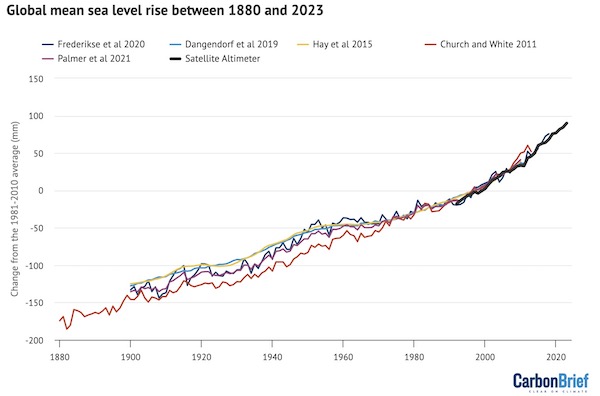
The most accurate satellite measurements, available for the last 30 years or so, are shown in black. Source: CarbonBrief
The excess heat on land and sea is directly impacting our lives: water cycles, storm intensities, and flooding; wildfire and drought; crop failure, livelihood stress, and food scarcity; plant, animal, and human diseases; habitability and migration. The US alone had a record number of billion-dollar climate and weather-related disasters in 2023. The Wall Street Journal recently warned about the $150 billion hit to our economy each year from climate change. The total cost of all 376 billion-dollar events since just 1980 is estimated to exceed $2.655 trillion.

Source: National Oceanic and Atmospheric Administration
This is why we need to act. Small changes add up and big changes create momentum. We will electrify transportation, buildings, and industrial processes while cleaning up and hardening our power supply. We will waste less food, rationalize our diets, and clean up our food supply. We will reduce, reuse, repair, recycle, and compost. We will carve out and enhance habitat for wildlife, support climate refugees, and manage our water more carefully.
We will do this with individual actions at home, collective action in our workplaces and communities, and innovation in our academic institutions, research organizations, policy-making bodies, and forward-looking businesses. Most importantly, we will do this by talking with one another and voting. That is how we bend these curves, and we can only bend these curves if we do that.
Current Climate Data
Global impacts (December 2023), US impacts (December 2023), CO2 metric, Climate dashboard
Note from Sherry: I have disabled comments on this week's post since I will not have time to respond. Those of you interested in China's progress in reducing emissions may be interested in this report. Those of you who are concerned about possible tipping points for the climate may be interested in this report.



